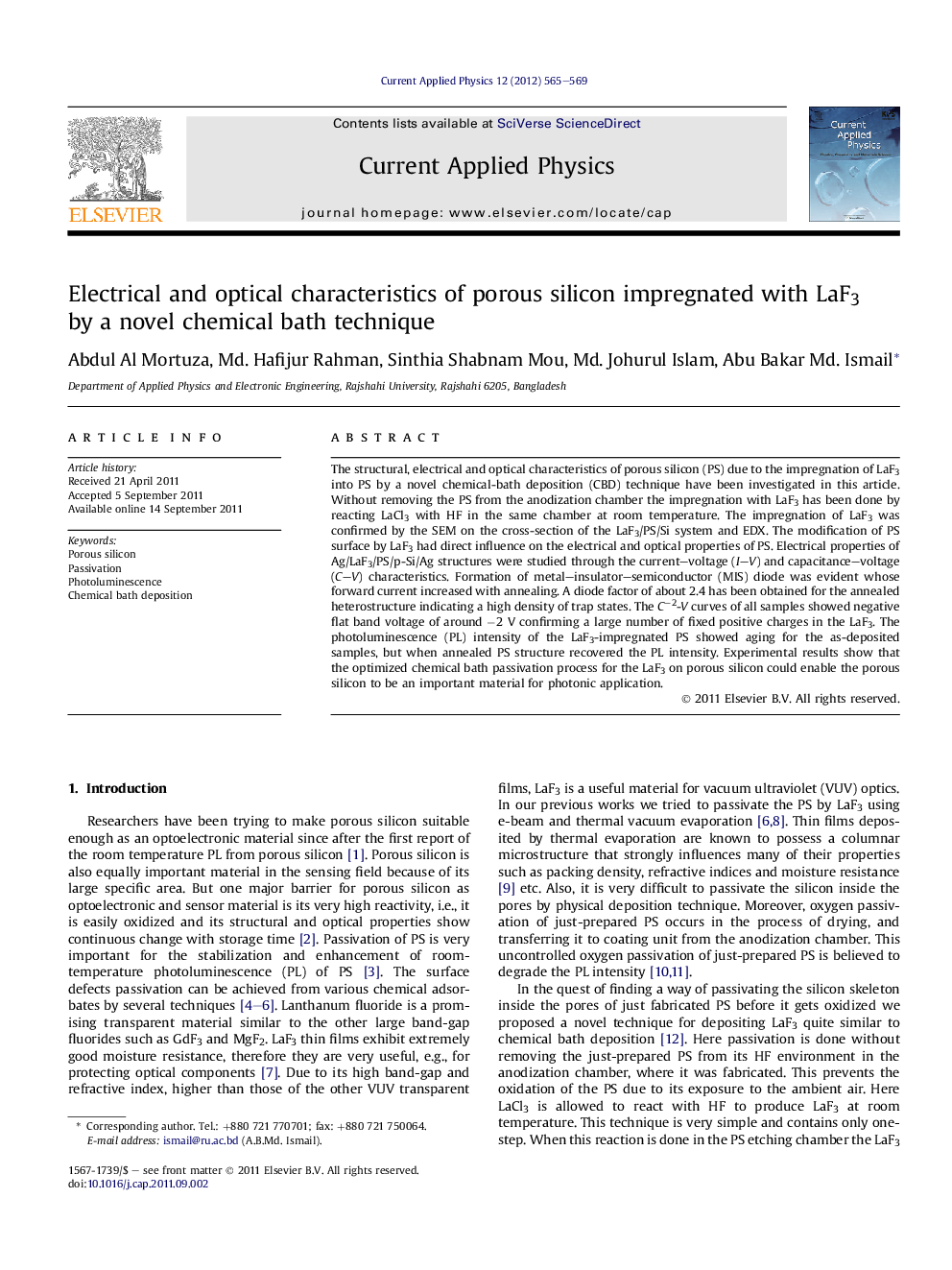| Article ID | Journal | Published Year | Pages | File Type |
|---|---|---|---|---|
| 1787091 | Current Applied Physics | 2012 | 5 Pages |
The structural, electrical and optical characteristics of porous silicon (PS) due to the impregnation of LaF3 into PS by a novel chemical-bath deposition (CBD) technique have been investigated in this article. Without removing the PS from the anodization chamber the impregnation with LaF3 has been done by reacting LaCl3 with HF in the same chamber at room temperature. The impregnation of LaF3 was confirmed by the SEM on the cross-section of the LaF3/PS/Si system and EDX. The modification of PS surface by LaF3 had direct influence on the electrical and optical properties of PS. Electrical properties of Ag/LaF3/PS/p-Si/Ag structures were studied through the current–voltage (I–V) and capacitance–voltage (C–V) characteristics. Formation of metal–insulator–semiconductor (MIS) diode was evident whose forward current increased with annealing. A diode factor of about 2.4 has been obtained for the annealed heterostructure indicating a high density of trap states. The C−2-V curves of all samples showed negative flat band voltage of around −2 V confirming a large number of fixed positive charges in the LaF3. The photoluminescence (PL) intensity of the LaF3-impregnated PS showed aging for the as-deposited samples, but when annealed PS structure recovered the PL intensity. Experimental results show that the optimized chemical bath passivation process for the LaF3 on porous silicon could enable the porous silicon to be an important material for photonic application.
► Impregnation of LaF3 inside the pore of porous silicon for the first time. ▶ A simple chemical route was used for LaF3 impregnation. ▶ LaF3 thickness influences the electrical and optical properties of porous silicon. ▶ Annealed-LaF3 with optimized thickness stabilizes the photoluminescence.
